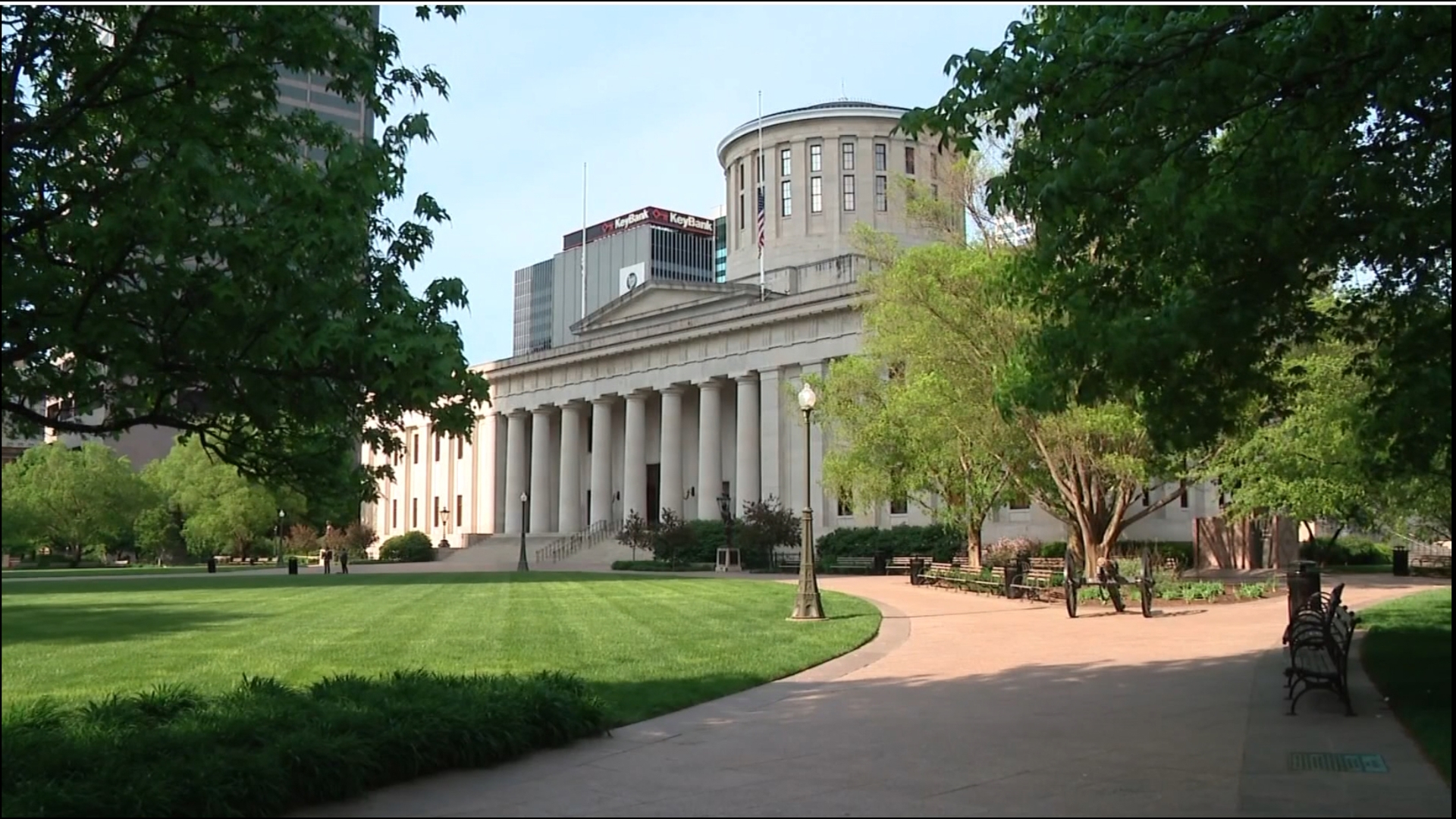COLUMBUS, Ohio — Vice President Kamala Harris and former President Donald Trump agree housing is a problem, but differ when it comes to finding solutions. Housing advocates in Ohio say Harris’ ideas would help but need the political will in Congress, and that Trump’s ideas are vague and unworkable.
Housing came up during the recent debates and both candidates are talking quite a bit about housing — a reflection of what’s on the mind of voters.
“It’s definitely a factor that voters of all backgrounds are talking about,” said Amy Riegel, the executive director of Coalition on Homelessness and Housing in Ohio. “It’s something that’s affecting their everyday life, and so voters are saying that they feel more significant pressure on their livelihoods when it comes to housing.”
Ohioans need to be earning at least $20.81 an hour working a full-time job to be able to afford a two-bedroom apartment, according to a report earlier this year by COHHIO and the National Low Income Housing Coalition.
Housing has recently become more of a political issue. Ohio Gov. Mike DeWine brought it up in his 2023 State of the State address and President Joe Biden emphasized it during his State of the Union address.
Harris’ housing policies include providing $25,000 in down payment assistance for first time homebuyers, adding 3 million homes In four years, expanding low-income housing tax credit (LIHTC), additional tax incentives for builders to produce more “starter homes,” and a $40 billion innovation fund for local governments to come up with housing solutions.
All of these policies are doable, Riegel said.
“When it comes to housing policy, it is not that we don’t have the ability to do these things,” Riegel said. “It’s that we haven’t had the political will to support the housing efforts that need to take place, and whether those are removing regulatory barriers or they are increasing and bolstering programs that already work, or creating new programs we just haven’t had the emphasis in that space in the past.”
These policies could help Ohio, Riegel said.
“Bringing more housing, more tax credits, more funding, more infrastructure within the federal realm to build more housing would be a great blessing to the state of Ohio,” she said.
Bolstering down payment assistance, especially for first-time home buyers, would help make home ownership more attainable, Riegel said.
“Being able to have a $25,000 down payment assistance program would make home ownership opportunities open up for people who are on that cusp of, can I afford it?” she said.
Home prices have skyrocketed 54% since 2019, according to a Washington Post analysis.
The $25,000 down payment assistance would be helpful for families who can afford a mortgage, but don’t have the money to put down on a house, said Mike Premo, executive director of Church and Community Development for All People.
“If you’re renting, your rent is going to continue to rise periodically, yearly, or every couple years,” he said. “And so by buying a house and stabilizing the cost of housing, you’re providing a safety net for folks who wouldn’t have it otherwise, if they had to keep dealing with the increases in rent.”
Expanding the Low Income Housing Tax Credit Program would likely lead to the development of more affordable housing, Premo said.
“We have a situation here in Columbus where people are being priced out of of housing, including sometimes of the housing they currently inhabit, because landlords feel like they can jack up the rents because the market will reward them,” he said. “So they may have had a place that was affordable for years, but now they want to flip it and make it a market rate unit, sell it on the open market or make it into a higher rent category, so those folks living there will be displaced.”
Rent increases can be especially tough for folks on a fixed income, he said.
“They either have to scramble to come up with money, which generally means bringing in more people into the house that can help them pay the rent, or they’ve got to take on an extra job, or most of the time, they just have to move,” Premo said.
Trump’s housing policy is less concrete.
“When it comes to the Trump-Vance plan, there is a lot of discussion about a plan, but there is not as much written detail,” Riegel said.
Premo echoed Riegel’s sentiment.
“His policy is, from what I could tell, incredibly vague, and I have questions about how it actually work,” he said. “I don’t think Trump’s plan is going to move the needle on actually building housing that people can live in.”
A major part of his policy is deporting immigrants, which Trump has said will free up the housing supply.
“As a state where we need to bring more people in, in order to fulfill the economic promises that we’ve made to corporations, we have to bring more people,” Riegel said. “So exiting people from the state would not be a benefit to the state of Ohio in meeting those housing needs.”
About 30% of construction workers in the United States are immigrants.
“We have to build more housing,” Riegel said. “I think we would find ourselves in a very dismal situation if, one, we were not bringing people to the state of Ohio, and two, we didn’t have the labor force that we need to prepare ourselves for the companies and the housing needs that we have currently.”
Both candidates have shown support for opening some federal lands for housing. In Ohio, the federal government owns 1.2% of land, as of 2022.
But Premo questions what kind of infrastructure would be in those areas.
“To me, it’s better to build housing where people live, as opposed to building housing way out in the middle of nowhere and expecting people to move and then find their way to work and school,” he said.
Trump has talked about developing single family homes.
“For a community like Columbus that does expect to add about a million people over the next couple decades, if we were to single-family-home-build our way to a solution, that is going to be incredibly difficult,” Riegel said.
Ohio needs to increase the density of housing, Riegel said, which looks different depending on the type of community.
“Density in Columbus may be a multi-family housing unit where you have a seven, eight-story building, or even a larger building than that,” Riegel said. “Currently, there’s a lot of communities where they do not have the infrastructure to have more than one home per acre due to the needs for septic systems and well systems.”
-
This story has been published under the Creative Commons license from its original publisher, the Ohio Capital Journal. Click here to view the original story.



